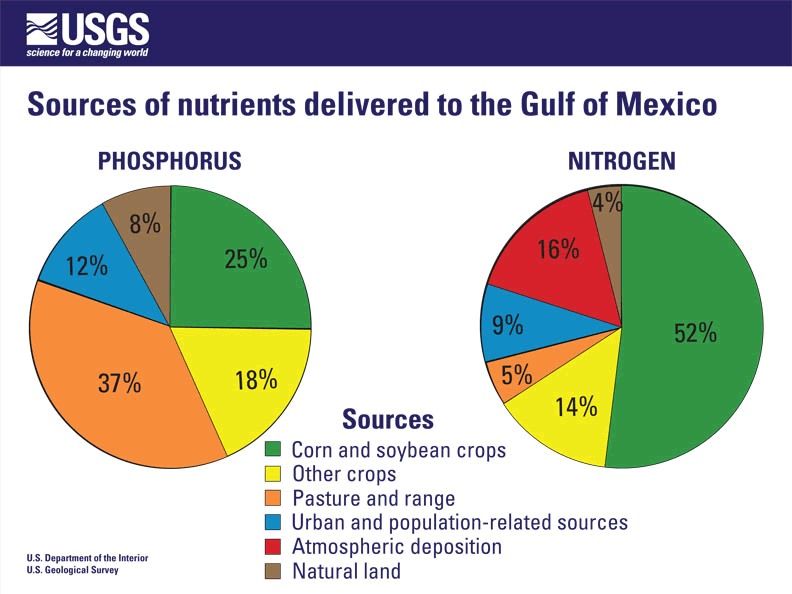National Water-Quality Assessment (NAWQA) Project
Back to Article Information || Previous Figure ||Next Figure >>

66 percent of nitrogen originates from cultivated crops, mostly corn and soybean, with animal grazing and manure contributing about 5 percent. Atmospheric contributions also are important, accounting for 16 percent of nitrogen.
Animal manure on pasture and rangelands and crop cultivation are the largest contributors of phosphorus, accounting for 37 and 43 percent, respectively. Findings suggest that phosphorus associated with the wastes of unconfined animals is a much larger source of phosphorus in the Mississippi River Basin than previously recognized. Current animal manure management emphasizes controlling nutrients primarily from confined animal facilities.
In total, agricultural sources contribute more than 70 percent of the nitrogen and phosphorus delivered to the Gulf, versus only 9 to 12% from urban sources. Such findings show the dominance of agricultural nonpoint sources outside urban areas in the Mississippi River Basin.